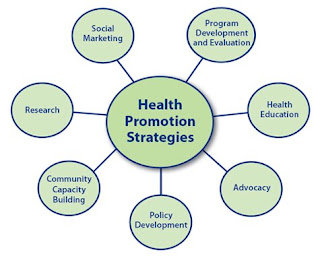Does Toothpaste Help Get Rid of Spots?
 Spots affect a lot of people, especially teenagers. Am I right in that you have at least once, found a big, red spot suddenly appear on your face the day before an important event? Whether it’s a party or a date, it can be an embarrassing situation.
Spots affect a lot of people, especially teenagers. Am I right in that you have at least once, found a big, red spot suddenly appear on your face the day before an important event? Whether it’s a party or a date, it can be an embarrassing situation.
Many people suggest that toothpaste will help get rid of sudden spots that appear overnight. The quick answer to this is yes and no.
If you find yourself with a sudden arising of a spot the day before you are going out on a date or on a night out and have no idea what to do, applying a small amount of toothpaste onto the spot and leaving it overnight can help reduce the size and redness of the spot very quickly. The toothpaste will remove the bad bacteria in your skin. When you do this, be sure to put a towel on your pillow to stop the toothpaste getting onto the pillow case.
Even thought applying toothpaste overnight can reduce the appearance of spots, it should only be used as an “emergency” application. Toothpaste contains strong anti-bacterial chemicals with which regular contact with the skin will cause irritation and will damage the skin.
Applying toothpaste to a bigger area than needed will cause irritation. Therefore, if you only suffer with the odd spot now and then, this method would be acceptable. however, if you are a person who constantly has small outbreaks of spots and/or suffers from bad acne, then toothpaste is not an acceptable method. It only affects the areas to where it is applied.
Until you are able to figure out the possible reasons why you get these spots, you will not be able to keep your face clean of them. Spots need to be tackled before they become visible.
Some suggestions on how to do this are:
Drink plenty of water every day
Eat healthily (plenty of fruit and veg)
Exercise regularly
Wash your face at least twice a day
Remember, toothpaste should only be used as a temporary or emergency solution. Never use whitening toothpaste, as the bleach it contains will irritate your skin. Toothpaste is designed to help clean your teeth, and your skin is very sensitive. Long term use of cleaning agents will only damage your skin. So apply small amounts and only on affected areas.
Everybody’s skin is different. If you find that toothpaste does not help you with curing your spots, or you want a method that you can use regularly, there are many creams available to buy that should do the trick.
I hope you found this very useful, remember to be careful when applying anything to your skin, and if regular irritation occurs, stop using immediately.…

 Bad breath affects everyone regardless of age, ethnicity, gender, social status or lifestyle. Although it is quite common, it is considered a socially embarrassing condition. It may also be an indicator of bad dental health since it is associated with tooth decay and gum disease. Thankfully, both conditions are preventable with the right treatments and good dental habits. Here are bad breath and tooth decay remedies that can help improve oral health:
Bad breath affects everyone regardless of age, ethnicity, gender, social status or lifestyle. Although it is quite common, it is considered a socially embarrassing condition. It may also be an indicator of bad dental health since it is associated with tooth decay and gum disease. Thankfully, both conditions are preventable with the right treatments and good dental habits. Here are bad breath and tooth decay remedies that can help improve oral health:
 You may be skeptical about using natural toothpaste for fear that it won’t clean as well as your regular toothpaste. Well, let me ease your mind; natural toothpaste gives you all the cleaning you need.
You may be skeptical about using natural toothpaste for fear that it won’t clean as well as your regular toothpaste. Well, let me ease your mind; natural toothpaste gives you all the cleaning you need. One of the very first things about toothpaste that most of us come to learn is that it is not supposed to be swallowed. As youngsters brushing our own teeth for the very time, we will remember being very sternly warned against swallowing the toothpaste. At that age, that would have sounded rather counter-intuitive, because for one, most of us had toothpaste introduced to us as ‘medicine for the teeth.’ So if the toothpaste had medical value, why not swallow it; we would ask. It didn’t help matters either that most toothpaste brands tend to contain some amount of sugar, so they are somewhat sweet. And seeing that as youngsters, we would have been accustomed to being encouraged to swallow the various sweet things that came our way, leading many of us to wonder why toothpaste was the exception.
One of the very first things about toothpaste that most of us come to learn is that it is not supposed to be swallowed. As youngsters brushing our own teeth for the very time, we will remember being very sternly warned against swallowing the toothpaste. At that age, that would have sounded rather counter-intuitive, because for one, most of us had toothpaste introduced to us as ‘medicine for the teeth.’ So if the toothpaste had medical value, why not swallow it; we would ask. It didn’t help matters either that most toothpaste brands tend to contain some amount of sugar, so they are somewhat sweet. And seeing that as youngsters, we would have been accustomed to being encouraged to swallow the various sweet things that came our way, leading many of us to wonder why toothpaste was the exception.
 In the early 1950’s concerns about dental health among children led to controversy when it was proposed that fluoride be added to drinking water. In Grand Rapids, Michigan fluoride was added to the drinking water and studies six years later found a dramatic decline in tooth decay among the children there. The Surgeon General endorsed water fluoridation and many communities responded by fluoridating city water supplies. Dentists joined in supporting this pronouncement.
In the early 1950’s concerns about dental health among children led to controversy when it was proposed that fluoride be added to drinking water. In Grand Rapids, Michigan fluoride was added to the drinking water and studies six years later found a dramatic decline in tooth decay among the children there. The Surgeon General endorsed water fluoridation and many communities responded by fluoridating city water supplies. Dentists joined in supporting this pronouncement.